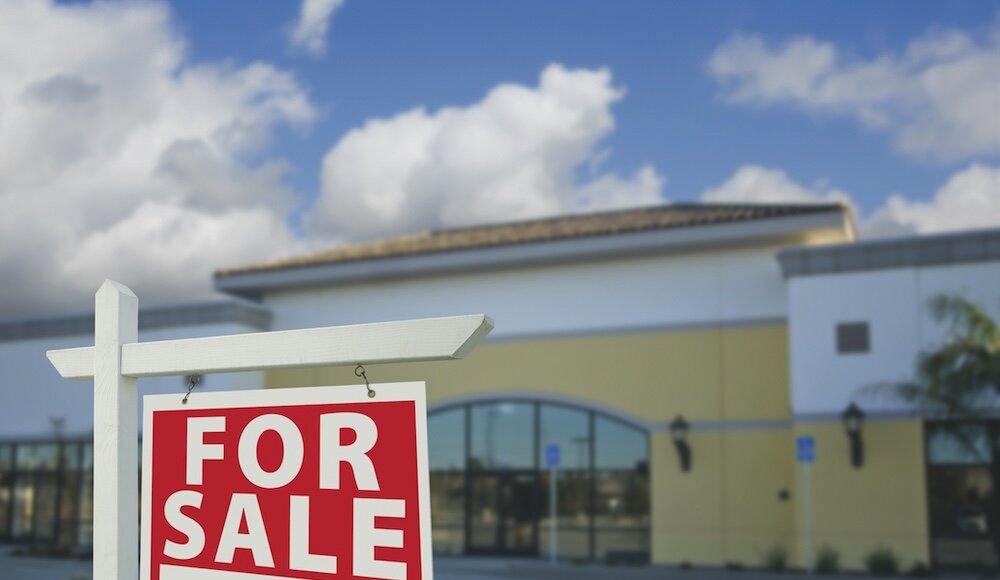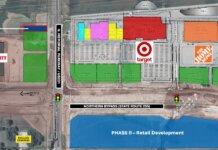
Commercial real estate entrepreneurs in Alabama are getting creative in finding new properties. They may not get their first choice of location or opt for smaller locations.
Complicating the picture are the realities of politics and workforce shortages.
Experts find that the demand for commercial space continues to be healthy in many areas, but that space is costing more because of rising construction costs and rent.
Retail trade, including food services and drinking places, accounts for roughly 473,000 jobs in Alabama, according to the Alabama Retail Association. The group represents more than 4,000 members with some 6,000 locations selling food, furniture and more.
Their figures show that retailers employ a quarter of the private-sector employees in the state with a payroll nearing $11 billion.
Retail Specialists, a commercial real estate firm headquartered in Birmingham, has been serving property owners and retailers for 20 years. Its team includes 37 licensed real estate agents and more than 70 employees in Alabama, Mississippi, Georgia, Texas and California.
In 2011, Retail Specialists launched Retail Strategies, a consulting firm specializing in retail recruitment, education, downtown revitalization and small-business support.
David Ashford is executive vice president of leasing and brokerage at Retail Specialists. He says what they’re finding in Alabama is that retailers and restaurant owners want to bring new business here. With rising construction costs and rents, though, they’re having to be flexible.
Overall, “we are certainly seeing prices go up,” Ashford says. “Prices have gone up on land. Prices have gone up on shop space. It’s created a lot of headaches in our world just trying to find sites because of the availability.”
Lack of options “can cause retailers to completely pass on a market and move on to somewhere else,” he says. “And we’ve seen that. We had a retailer that we’re working with that is a food and beverage concept, and they wanted to locate on Highway 280” in Birmingham for their first location in the state.

“There’s nothing available to them that they like well enough to lease. So, they’ve moved on to another market. Now their focus is on Dothan and South Alabama.”
If they can’t find the space they want and it can’t be built for them reasonably, Ashford says, “then they’re just going to move on to somewhere else that they can.”
As rents and construction costs go up, fewer new shopping centers are popping up, too. Some retailers are opting for smaller spaces.
“A lot of 20,000-square-foot retailers have gone down to 12,000 feet and they’re looking in towns that have, say 50,000 to 100,000 people or 50,000 to 100,000 population trade areas,” Ashford says.
Five Below is a good example, he says, as it moves to locate smaller stores outside big urban areas.
“They used to be a 16- to 18,000-square-foot store. They’re now looking at 8- to 10,000-square-foot stores in cities like Hartselle, Sylacauga and places like that.”
With rent in the mid-$40s per square foot, Ashford says retailers have to “figure out how do I get lower rents, and tertiary markets is a good way for them to do that.”
With increasing competition from online retailers, smaller cities “need the support,” he says.
“I do think specialty brands are starting to emerge in brick and mortar. Higher-end people like Warby Parker and things like that that are expanding,” he says.
College towns like Tuscaloosa and Auburn are seeing an influx of retailers. Locating in downtowns, too, is increasingly popular.
“Really all of the major metros are seeing an uptick in retail activity,” Ashford says.
Alabama is “pretty retail heavy,” he says. Publix, for example, “does very well in Alabama.”
Since the worst days of the COVID pandemic, the market has rebounded as people want to get out of the house, shop and socialize.
“People are spending more dollars on food and beverage and entertainment,” Ashford says. “I think that we’ve just seen that trend and it’s just continued. So, it’s kind of fueled growth, which has been very positive for those of us in the retail industry.”
Retail Specialists also is seeing city incentives and public-private partnerships, especially in new construction, he says.
“That’s become a big trend. I would say that most new construction today cannot happen without a public-private partnership unless it’s a major booming market.”
Attractive areas like Huntsville, for example, don’t need to offer a lot of incentives “because the retailers want to go there.”
Within smaller markets, “we educate our cities on how to structure tax incentive packages and things like that,” Ashford says.
The market for coffee and breakfast places is still “huge,” he says. New retailers, particularly food and beverage concepts, like Small Sliders, continue to show interest in Alabama.
“We are working with and are trying to bring Dog Haus, which is an LA concept” with a biergarten atmosphere, gourmet hot dogs and sausages.
But economic and political realities influence the best-laid plans.
“Cost of steel is still up,” he says. “You don’t know what’s going to happen with tariffs and all that moving forward in construction.”
Construction is probably going to be backlogged, he expects.
“I think there’s a strain on the labor market right now in construction. And so, with all those costs, demand hasn’t stopped. There is demand for renovating space and there’s demand for new build,” Ashford says.
Even if retailers find a second-generation space that works, rents are going up. Renovation may cost in the mid-$20s per square foot versus $40 on a new build.
And then there’s the federal crackdown on undocumented workers.
ICE raids “have affected the labor market,” the association is finding. One Alabama contractor says some of his workers just aren’t showing up, and 30 or so people who did were pulled off a job site at midday. Even a simple roofing job takes longer with a smaller crew.
“That means that the cost of labor is going to go up,” Ashford says. “You’ve got to find somebody to replace those people. And typically, your more certified skilled labor is going to be more expensive than people who are going out and hiring unskilled laborer to do this work.”
The overall picture is still mixed, though. In South Alabama, one real estate agency is finding that inquiries for property are down at the moment.
Chris Harle is managing broker of commercial sales and leasing at White-Spunner Realty in Mobile.

“I think the biggest reason is that the cost of doing business has risen so dramatically in the last few years,” Harle says. “Occupancy rates are at an all-time high and the spaces that do remain are not going to be your top-class A spaces, or they need a bunch of work, and because occupancy is so high, rental rates have risen dramatically as well.”
Finding enough people to work is hard, too. Harle has two former restaurant spaces that have been vacant for a while.
“A year ago, I would have had them leased within a week of going on the market. I got calls almost daily from people looking for restaurant space,” he says. “I have reached out to lots of restaurant operators I know, and they all say they would love to expand but they can’t hire enough people to staff what they have now.”
At White-Spunner, too, they’re seeing the majority of retail business owners look for existing property.
“The cost of construction has raised rent prices so high it’s really hard for retailers to make the numbers work on new construction,” Harle says. “That’s what has led to such high occupancy rates and why new developments have slowed dramatically in the last few years.”
The University of Alabama’s Alabama Center for Real Estate Commercial Real Estate Index Survey measures future expectations from professionals in commercial real estate and related fields. The ACRE 2025 third-quarter survey earned a score of 59.9, indicating moderate expectations for commercial real estate expansion.
Wages are up, too, which helps.
ACRE Director Stuart Norton says that according to the most recent National Association of Realtors Commercial Real Estate metro market report, the Birmingham-Hoover metro area had one-year wage growth of 8.1% in March 2025 – above the national average of 3.6.
“Wages in the area are growing at over twice the national rate, and this is a very good sign for Birmingham’s retail market as it is driven by consumer spending,” Norton says.
In the Birmingham metro area, retail properties reported a 12-month market rent growth of 3.5% during the first quarter of 2025, a significant improvement from the negative 1.2% showing in market rents during the first quarter of 2024. The vacancy rate there is 4.1%.
“The current level reflects a relatively low level of risk and relatively high valuations for retail properties,” he says.
The Huntsville metro area, in particular, he says, should see a large boost in demand for all property types with the relocation of U.S. Space Command from Colorado.
Deborah Storey is a Huntsville-based freelance contributor to Business Alabama.
This article appears in the November 2025 issue of Business Alabama.



